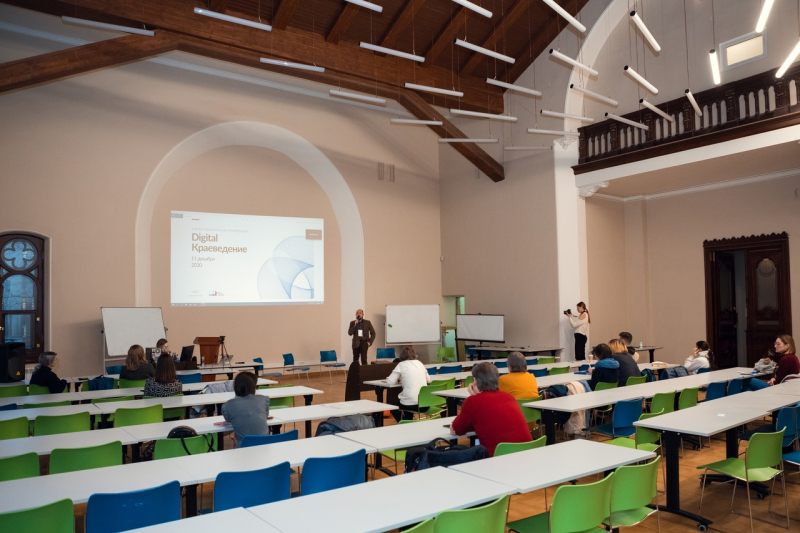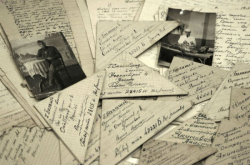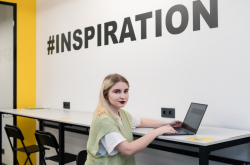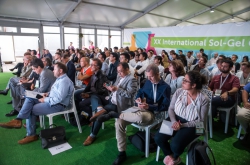The main goal of the event was to pinpoint the key challenges of contemporary local history research and offer ways that they can be solved with new technologies by creating a dialogue between historians, urban researchers, librarians, and IT specialists. Another task was to demonstrate the projects of ITMO’s International Digital Humanities Center (DH Center) to discuss potential collaboration.
Cooperation problems
The event ran in the hybrid offline-online format with two parallel sessions. The offline one opened with a talk by Alexey Shishkin, a well-known blogger, journalist, historian, and local history expert. He started by outlining the main feature of being a tour guide or a city researcher, which is both its challenge and its blessing – it’s decentralized and has no hierarchy. In fact, anyone at any moment can call themselves a guide and organize their own tours, as you don’t need any specialized education or a degree to enter this profession. At the same time, any attempts by officials to control this trade will lead to the death of personal tours. A similar problem occurs, when we try to unite all historical sources under the same “roof” – the information is so diverse, and there is so much of it, that it simply cannot be brought together on just one online resource.
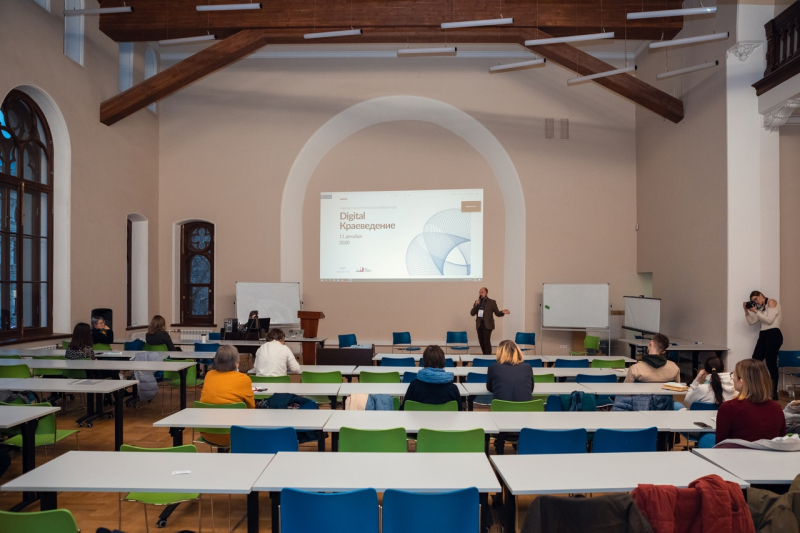
The issue of creating a unified source or a database became the key point for the following open discussion moderated by Antonina Puchkovskaya, head of the DH Center. For instance, Alexandra Savelyeva, lead bibliographer at the St. Petersburg studies department of the Mayakovsky State City Library, talked about the initiative of creating a single access point for all local history enthusiasts – in the form of the Mir Peterburga webpage and the St. Petersburg On the Map project (both in Russian). Despite the fact that the majority of city libraries, museums, and cultural institutions joined forces, there still remains a problem of systematizing this vast amount of information.
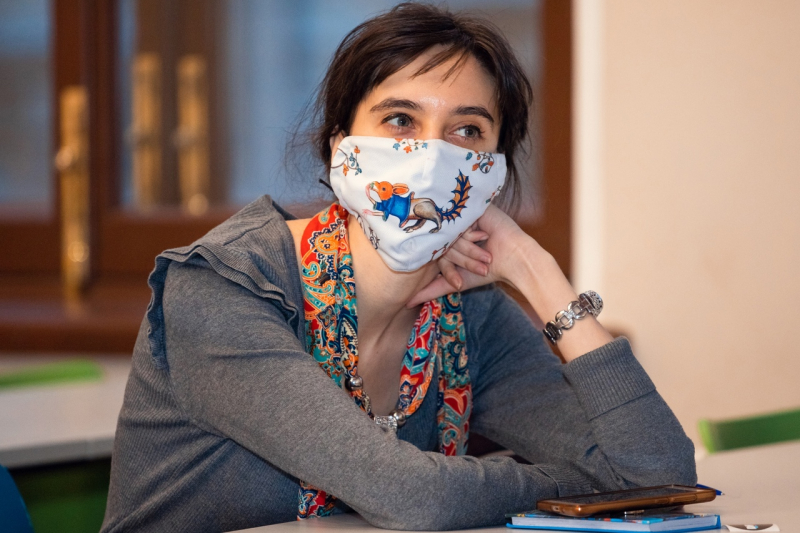
Personalization and storytelling
Participants of the discussion agreed that studying local history is very subjective and emotional and thus such information has to be captivating and easily accessible. Nadezhda Balatskaya, senior researcher at the bibliography and local history department of the National Library of Russia, defined the struggle to learn about the place we live in as one of our basic human needs. People are mostly interested in locations relevant to them – the houses they live in or the buildings housing their offices, the streets they cross every day. And thus people want to consume information accordingly.
Experts say that it is digital tools and new technologies that can help us structure and personalize this information. An example of this was demonstrated by Lada Zimina, a second year Master’s student in the Data, Culture and Visualization program and an engineer at the DH Center. She presented Que.St, an app that helps learn city history by playing a game.
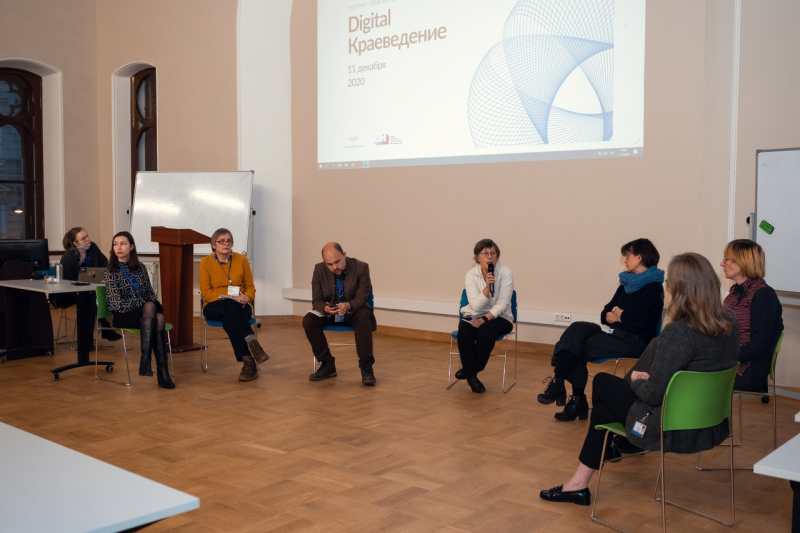
One other option of attracting users was suggested by Nikolay Gorunov, a writer, local historian, media designer, and one of the founders of the Clutch Lever to Reality project. For over ten years, his team has been creating tour guides based on literary sources integrating digital elements into the traditional format. For instance, they place QR codes in printed books, additional footnotes in digital editions, and create tours not only with Google Maps, but also with services like ArcGIS StoryMaps that allow them to tell a whole story with a tour.
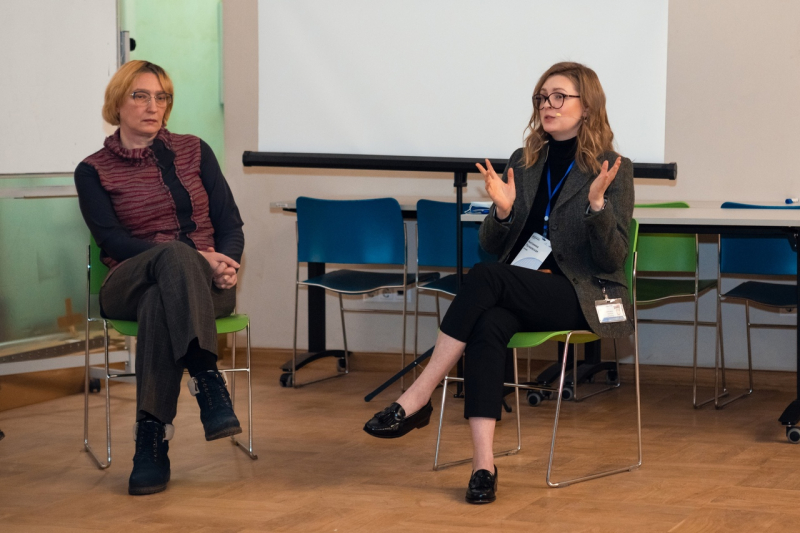
3D restoration
New technologies can not only tell about history but also help preserve it – for instance via 3D VR reconstruction of cultural heritage sites. It was the topic of a talk given by Galina Zhirkova, head of ITMO’s Center of Social and Humanities Knowledge. She discussed the virtual 3D model of the dining room of Pavel Stroganov’s house (now one of ITMO buildings) on Tchaikovskogo St. 11/2. The model was based on the original detailed watercolors by Jules Mayblum. The project is a collaboration with the Center of Usability and Mixed Reality, and in the future it is planned to create similar reconstructions of ITMO’s other historical sites.
We also talked to the conference participants and organizers about why local historians need to collaborate with IT specialists and how the transition to the digital environment can help in popularizing knowledge about the city.
Antonina Puchkovskaya
associate professor, head of the DH Center and the International Master’s program in Data, Culture & Visualization, organizer of the conference
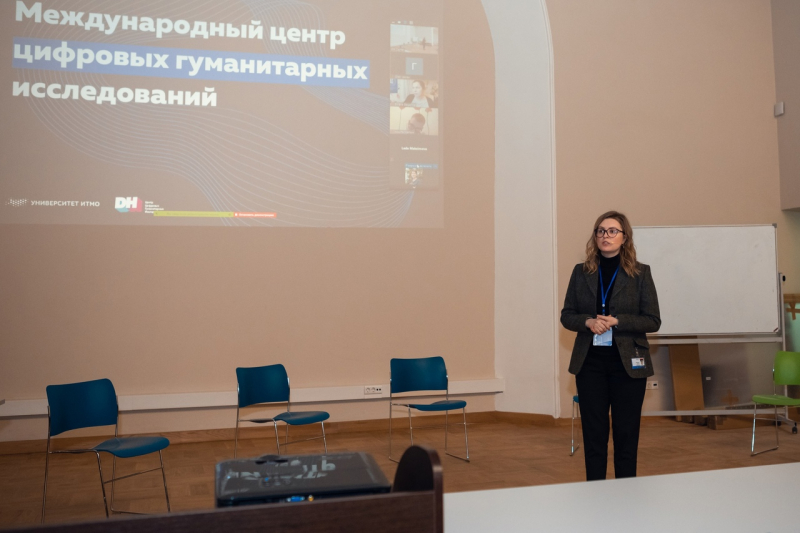
The idea for such an event came to us a while ago, when we were only starting the work on the St.Retrospect project. From the very outset we saw how important it was to create an open dialogue with local historians and the museum and librarian communities. Now, when the project has developed and received an extension in Que.St, a gamification app, while the DH Center is actively increasing its partner network with the city’s cultural institutions, we understood how relevant our undertaking was. The Digital Local History Conference became a platform for dialogue between historians, urban and cultural researchers, and other specialists studying the city and digital transformation. The main outcome of the conference for us are new partners and concrete cases for future collaborations. In the future, we are planning to attract our students to these collaborations via internships, as well as to broaden the audience of our local history projects and research. Moreover, there will be a publication with peer reviewed articles of our speakers – so the conference also was a successful academic event.
Elena Smolina
senior researcher at the research and methodological group of the Boris Yeltsin Presidential Library
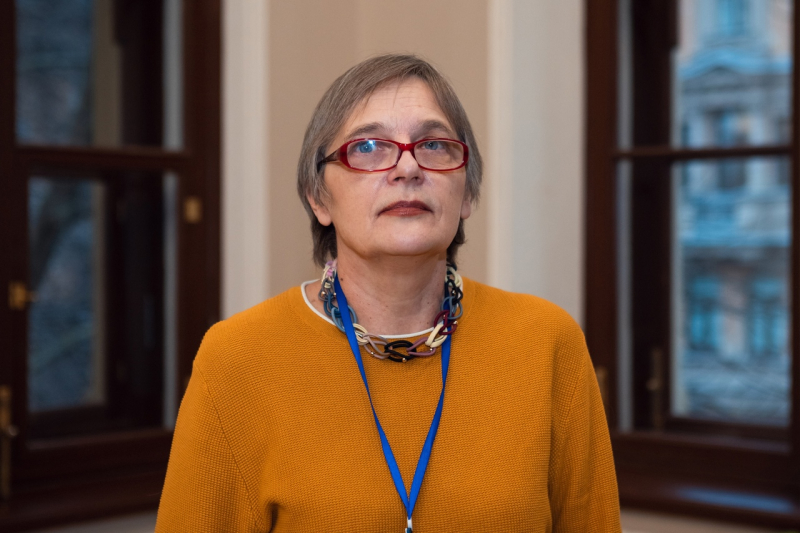
We strive to develop libraries in the digital field and create an ideology of moderating national heritage. We design new ways to work with digital users and readers.
The Presidential library has been operating for ten years and it has about a million storage items. There are only 25% of these resources on our webpage with around 12,000 daily visitors. For context, the page of the Library of Congress attracts several million people a day – thanks to its digital service strategies. Our goal is to make our page just as popular.
The digital environment allows us to provide access to the rarest editions that are considered to be in public domain. For instance, you can read documents written in Old Russian (with translations and commentary) online, when no one would allow you to touch them in person. The potential is huge, but the questions remain of how we create these resources and update them, so that they are not only accessible but also attractive.
The digital development of libraries depends on the convergence of technical sciences and humanities. Experience tells us that we can’t do it separately. That’s why I consider this conference important – it’s one of the very few that brings together experts in IT and the humanities.
Alexey Shiskin
feature-writer at Bumaga online media, head of the center of St. Petersburg research at Mayakovsky State City Library, member of the Gang local history club
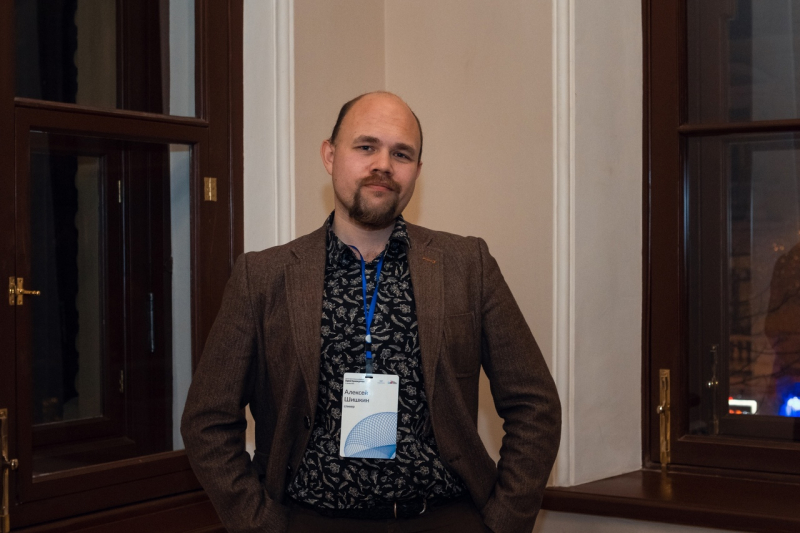
I have close connections to ITMO: many of my friends work here, I take part in the university’s projects – for instance, I have written a history of one of the departments and spoke to the professors. Moreover, I have been working at the Bumaga online media since its foundation – and during the first years we were supported by ITMO’s business incubator, so I spent quite a lot of time at ITMO’s building on Birzhevaya.
That’s why I happily accepted the invitation to speak at the conference. Also, I really wanted to see the restored building on Lomonosova St., it was my own local historian interest.
The topic of the conference is highly relevant. For 20 years museums and libraries have been trying to create online projects on local history and digitalize their catalogues, but the rise of it all happens only now. It is in the spotlight because digital local history studies outgrew the realm of just one institution – and therefore there was a shortage of non-institutional participants at the conference, even though I believe they could have added to it. But overall the time, the location, and the topic are all in their places.
For me, digital local history research means new tools and a new level of accessibility that can be reached with digital media. Databases become part of mass communication. That is why it’s only right that ITMO with its experience in the digital realm pays attention to this field.
Alexandra Savelyeva
lead bibliographer at the St. Petersburg studies department of the Mayakovsky State City Library

We don’t only work with readers but also conduct research – first of all, on the history of our library and the buildings it occupies. For instance, we publish Fontanka, a magazine about all things St. Petersburg.
Our department is rather young – it was created in 2003, and we don’t have an extensive book stock, the digital sphere became an important part of the work for us. In 2007, we launched Mir Peterburga, where we collected all digital resources from many organizations. We also created St. Petersburg On the Map, a project with the goal of making the work of libraries available to the public and represent every digital aspect of St. Petersburg studies.
Two years ago, when the DH Center had just opened, we started keeping track of its activities, but only recently we’ve met in person. We’ve already discussed the opportunities for collaboration, and I think we will have many joint projects.
Alla Knyazkina
head of the educational project Petersburg Institute
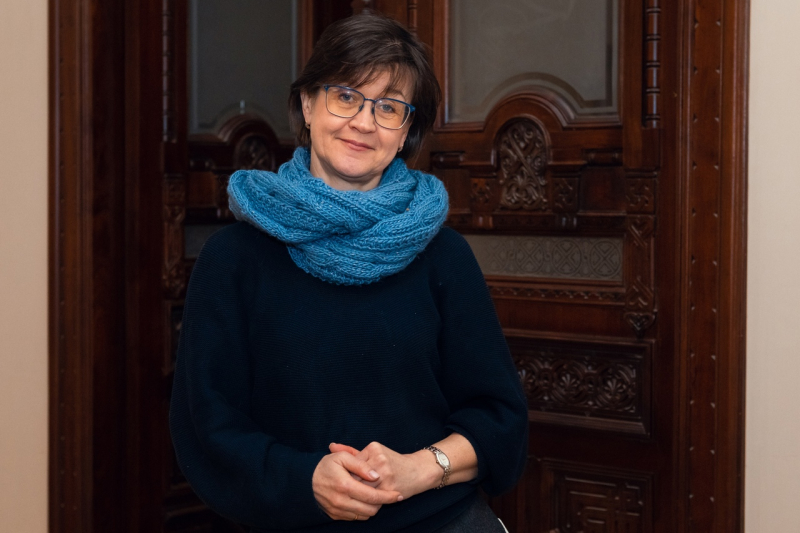
Our project is based on an NGO and has been running for 30 years. We hold educational activities and offer a program of systematic knowledge about the history and culture of St. Petersburg. Right now, we are interested in attracting a younger audience – we have a lot to share. We want to expand our social media presence and create our own online projects or join some.
We collaborate with the Center of St. Petersburg studies. We don’t only host lectures or organize tours, we also have the so-called Researcher School – an open non-commercial school, where we explain, which sources to use, how to look for information in libraries, and what are the benefits and drawbacks of different resources. Moreover, we teach basic research skills – if a person wants to get into local history, we help them with information, methodology, we also curate their research. We also help them to complete their works, publish them, and take part in conferences or create their own digital products.
That’s why the topic of the conference is very interesting. I think it will definitely grow into a mutually beneficial collaboration for local historians and the DH Center.
Nikolay Gorbunov
writer and local history expert
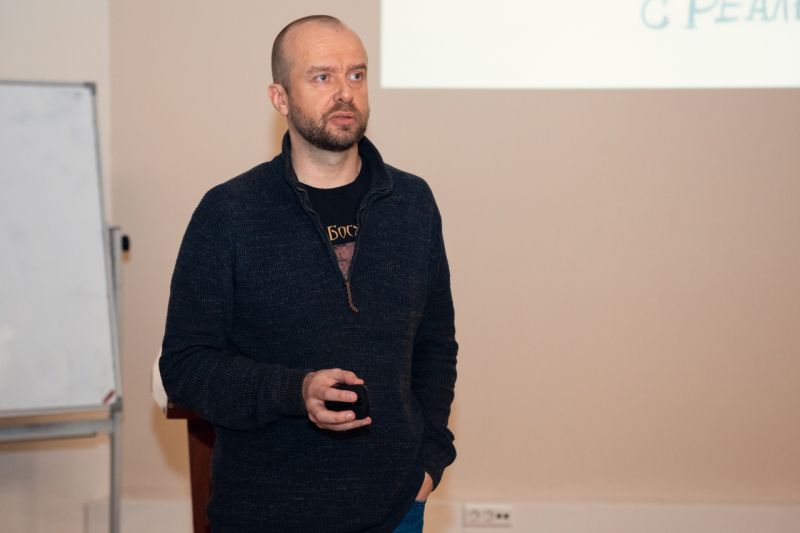
Our team works with literary tours. It’s actually a very old invention. It’s just that as the new technologies came into our lives, we understood that we could use them in our projects. First, we simply created routes in Google Maps – and in ten years we put around 60 books on the map. The first thing that we did was Andersen’s Copenhagen. It was a paperback in a hybrid format – with QR codes that lead to ready routes on Google Maps. Now we are trying to make an ebook out of it with interactive footnotes and additional digital materials.
We also wanted to work with tourist legends, because when a story turns into a legend, people will come to see it even if it’s a long journey. People visit Perm for Bazhov’s fairy tales, they come to Denmark for Andersen, or travel the whole world following in Hemingway’s footsteps. We could potentially create an ecosystem, where the professional tourist community would order local history research, so that later media content specialists turn it into a full-blown tourist product. Currently, local historians work on their own. If their work got into more popular sources, there would have been more people who love their cities and know their histories.
The humanities have always been the ones to set questions for the hard sciences to solve. That’s why it’s a natural merger. Digital humanities studies are actually very productive, as it helps conduct research that previously required a lot of manual labor.
